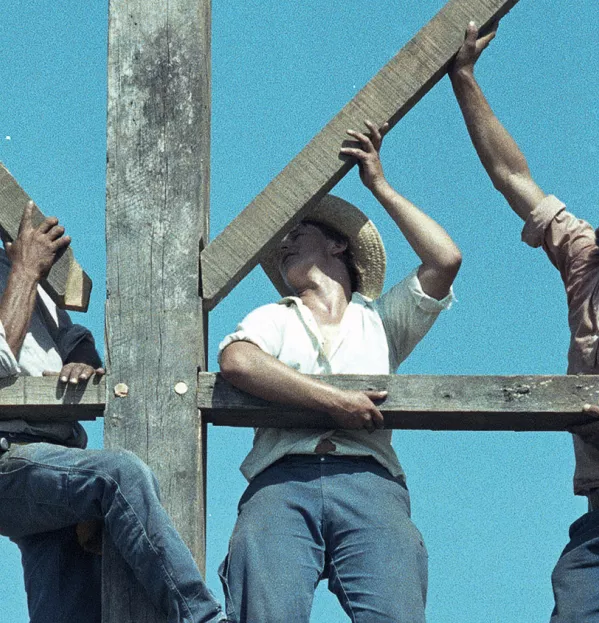College mergers are about people, not empire-building

Over the past decade, college mergers have shuffled in and out of fashion on many occasions. After a flurry of activity following the Foster and Leitch reviews in 2005 and 2006 respectively, the former Department for Innovation, Universities and Skills put the brakes on in 2008. It stressed that it had no plans to “reduce the number of corporations in the FE sector”, adding: “We do not believe there is any well-founded evidence in support of large colleges.” How things have changed.
In England, of course, the instigation of the first area reviews in 2015 put mergers squarely back on the agenda. Over the border in Wales, however, this transformational step started back in 2009, when my then employer, Deeside College, took over the failing Welsh College of Horticulture. A year later there was a second merger with another agricultural college, Llysfasi, whose board had recognised the need for change and the benefits of regional scale.
The realisation of the vision of a regional college for north-east Wales was achieved in 2013, when the enlarged Deeside College (by then a large general FE institution, with two major land-based operations) merged with Yale (a tertiary college with significant vocational provision). Coleg Cambria was formed - four years and three mergers in the making (two type B “takeovers”, and a type A “proper” merger). It was a brand new institution, with a new name - a regional college, based on the Wales border with Cheshire and north Shropshire.
Cambria is now less than four years old and, although we are far from perfect, it has been a successful merger and we have established ourselves as a leading UK college. So how can other leaders learn from our experience? Here are four lessons we have learned:
1. Remember that colleges are people organisations
Should we have done all of our mergers simultaneously? Under the circumstances, the answer is definitely no - others have failed where such an approach has been taken.
Setting out a multi-merger in terms of a predefined series of mergers is usually futile; imagine how it might feel to be at number three or four in such a “takeover”-style merger.
Cambria was formed through having a real empathy for all of the different colleges, regardless of size or performance; through being flexible in terms of merger types, regardless of relative institutional size.
2. Focus on your destination
Doing things in stages and compromising doesn’t mean you don’t need an end goal. From 2008, our aim, with good reasons, was always to create a regional college based in north-east Wales; we got there by never losing sight of that end point.
Having good reasons for that were very important, though: merger proposals that are driven by empire-building, asset-stripping or pursuit of economies of scale, or which arise mainly as a result of a response to external pressure, usually fail.
I may have once been rudely referred to as a “megalomaniac” by a colleague in the sector, but Cambria was certainly not an empire-building exercise. Indeed, six months prior to creating Cambria, we were asked to take over another college, too - and immediately refused.
3. Build a delivery strategy
A vision is nothing without a planned delivery strategy. Evidence and analysis have demonstrated that the perceived benefits of larger college size are not guaranteed.
Learning from the pre-2009 merger experiences, we developed an integrated partnership framework, aligned to distinctive strategic procedures. These were key to our successful merger transition in such a dynamic and turbulent policy environment. It harnessed the commitment of staff and external stakeholders to merger, engendered new educational and economic initiatives, and ensured an effective merger transitional process for the new regional college.
4. Be prepared to change
The planning is relatively easy. What is more difficult is leading a large, multi-site college made up of parts which were previously proud, independent and distinct institutions.
In my first role as a principal, I had worked on a single-site, medium-sized college. It meant that I could see colleagues at all levels most days and “walk the talk”, easily sharing the delivery of a commonly developed sense of direction.
A large, multi-site college changes that dynamic. You can only be in one place at any one time, and there are increasing pressures from being large. It means changing what you do, really being the CEO, and genuinely building a distributed leadership team of talented senior colleagues who share the vision. Don’t micro-manage them, and do encourage staff to see other managers as your co-leaders of the organisation.
David Jones is chief executive of Coleg Cambria. He was named FE leader of the year at the Tes FE Awards 2017. He tweets @davidjcambria
You need a Tes subscription to read this article
Subscribe now to read this article and get other subscriber-only content:
- Unlimited access to all Tes magazine content
- Exclusive subscriber-only stories
- Award-winning email newsletters
Already a subscriber? Log in
You need a subscription to read this article
Subscribe now to read this article and get other subscriber-only content, including:
- Unlimited access to all Tes magazine content
- Exclusive subscriber-only stories
- Award-winning email newsletters